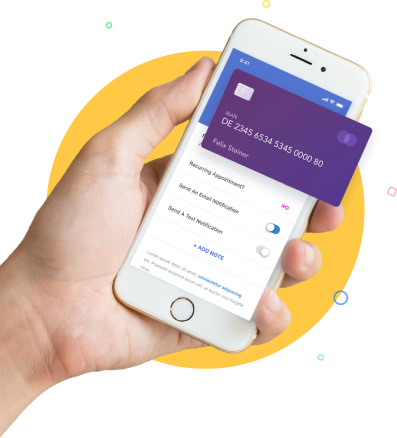Identity Governance
What is Identity Governance
and Administration (IGA)?
When you use IGA systems for identity management, you’re combining identity administration, which takes care of accounts and credentials, with identity governance, which handles roles and permissions and analytics.
In addition to traditional Identity and Access Management (IAM) systems, IGA solutions provide extra capabilities. In particular, they enable companies to audit access for compliance reporting and assist them meet compliance obligations by helping them fulfill compliance standards. They also automate workflows for tasks such as access approvals and provisioning/de-provisioning.
Access Management
Services
When it comes to introducing, operating, or upgrading IAM solutions, companies encounter many challenges they cannot properly address on their own. Therefore, professional advice is very important when choosing a suitable solution. At Security Accent, we are happy to help you carry out holistic analyses of your requirements and take these into account throughout the RFI and RFP process. In doing so, we consider the legal requirements, internal security guidelines and compliance regulations. We also take into account the underlying strategies in your organization, whether you have a cloud-first, mobile-first or other strategy. In addition to the technical requirements, we consider other important factors for success such as, for example, transparency, usability, and consistency.
To achieve this, we analyze your specific customer system landscape and then create an IAM solution tailor-made to your requirements by including the following elements and functions:
- Identity Lifecycle Management:The full life cycle of identity that covers every aspect of identity and access management (IAM) from the moment a person is hired and on-boarded to the moment they leave the company.
- Authorization administration & role management: Access is defined and managed using user roles.
- Access request management and workflow orchestration:Workflows that make it easier for users to demand and get access and approval to target systems.
- Access review(recertification and reconciliation):Tools that make it easier to audit and verify (or revoke) users’ access to various applications and resources.
- Segregation of Duties (Task Segregation): Create rules that prevent risky sets of access from being granted to a person
- Provisioning:Provisioning and de-provisioning are automated at both the user and application level
- Reporting and analysis:Tools for logging activity, generating reports (including those for compliance), and providing analytics to discover issues and optimize processes.
The in-depth know-how we gained in numerous implementations makes us able to transform your IAM projects into success stories.

In the constantly growing authorization structures of a company, the question arises as to how a sustainable management and governance can be brought about?
In fact, the main issue that companies are faced and complain about is the high complexity and lack of transparency of their company’s authorization structures. The constant change in business processes and organizational structures makes manual role management practically very difficult or even impossible. In addition, the involvement of business departments is necessary in order to optimally design these authorization structures in compliance with the four-eyes and least privilege principles.
Modern role management tools simplify this task with a strong focus on the user experience and deal with the continuous checking, optimization, cleansing and control of application authorizations and company roles, via which, employees, customers or suppliers gain access to company resources. They offer the possibility to visually display authorization structures in order to create more transparency and participation. Roles can be proposed automatically throughout the company based on existingauthorization structures and then built and released in a second step (bottom-up approach). In the top-down approach, roles can also be defined with the participation of the business departments.
The connection of the role life cycle to workflows with the participation of the business departments allows role models to be continuously improved. Not only conflicts can be detected automatically or on an as-needed basis, but the respective violations are also directed to the right place.
Automatic analysis techniques can be used to identify authorization anomalies and sets of rules. This enables the use of role management in practice in a transparent and efficient manner.

Your digital world consists of high-value mission-critical assets that include intellectual property, financial data, or private customer information? Do you want to avoid complex IT landscape and data redundancy?
The ultimate solution is to apply a new approach and undertake some effort to determinefor your unique use casesthe appropriate IAM architecture, to be implemented, that involve different type of operation models,reduce the manual effort and facilitate the daily work. But before you start, you’ll need to know what you’re trying to do, who you’ll be authenticating and why, what apps your users use, and where they are situated?
Identity and access management (IAM) tools are often sought because of a pain point in your organization. Possibly, the helpdesk is swamped with access requests or some recent compliance audits may have come up empty-handed, while others may have shown a surplus of user permissions. Organizations using poorly designed processes have gaps in their key controls, therefore, the first step to avoid this situationis to imagine from the outsetwhere you want to be at the end of the process and to ask yourself what kind of process should you define?
To successfully build a robust identity perimeter, IAM leaders should adopt, apply and actively use best practices which include key metrics, for their IAM implementations. Let’s look at one use case – joiner, mover, leaver – to see how a solid IAM procedure enables an instantly productive workforce to handles these touchpoints and take the correct action:
Let’s imagine there is no IAM procedure in place to add/remove access for employees/ex-employees, and human error results in this access being forgotten about. Unfortunately, your data are now in the hands of someone who may bring damage to your organization. Unauthorized access not only poses a data breach risk, but it may also lead to a failed compliance audit and expensive fines.However, with an IGA process that involve the joiner/mover/leaver approach, when new employees join the company, they could automatically have access to everything they need to begin their work, they don’t have to wait for days before they can begin to be productive. As soon as employees change departments, their access privileges are updated so that they may begin their new positions immediately and don’t have access to unneeded information. When they leave the company, they cannot access to the organization’s data and applications anymore. Access disabled/removed.
Therefore, having your strongIAM architecture and process in place is crucial to ensure smooth business operations and avoid facing recurring influx.
Our experts help you to build a clear architecture based on standards/protocols, supported by connectors, and ensure the integration with other company’s systems. The interoperability, which is a strongly recommended best practice, should be also taken into consideration while building the architecture. It facilitates the connection to IT infrastructure without skipping any detail or duplicating existing components. As a service provider, we help you as well to design/redesign the processes which you need to fulfill your requirements and cover the compliance regulation.

After selecting an off-the-shelf solution, organization will be equipped with capabilities and features of common IGA processes implemented by the vendor. However, the situation could be different for companies which need to have their own processes implemented to comply with internal and external regulations as well as to ensure a good user experience. To do this, the question which arises here: how to achieve this in time, budget and with a good quality?On the other hand, in case of having already an IGA solution in place,organization will most probably face the problem that business, compliance and technical requirementsare continuously changing over time which leads to modify the implementation.
Having a good implementation and integration partner on their side will make the job easier for organizations, since they will be advised whether theirneeds require configuration, process customization or even completely new implementation. This is crucial to be in time, budget and to have a good implementation quality.
Most market solutions offer some level of configurability to cover client’s needs. Profiting from such a possibility will for sure save time and budget as well as keep them sticking to standard implementation. This is the good news. The bad news is that their requirements can’t be just fulfilled by configuration only. In this case, theyhave to step up and customize default processes and workflows. However, if requirements need some deep changes, organization will have to do some new implementations to fulfill them. The best way to do that is contacting IAM experts to help them saving budget where possible and doing the customized implementations if required.
With the help of our experts, we help you to implement your requirements and to transform your projects to success stories. Based on our long years’ experience in industrial projects, we can support you by adopting market leading solutions, understand your uniqueness and implement your needs following the best architecture, using standardsand considering best practices. We help in the whole development lifecycle, providing a team of business analysts, developers, testers as well as project management. Our IAM experts and young talentsensure that the right solution is found, designed, developed and successfully integrated into the ITinfrastructure.







